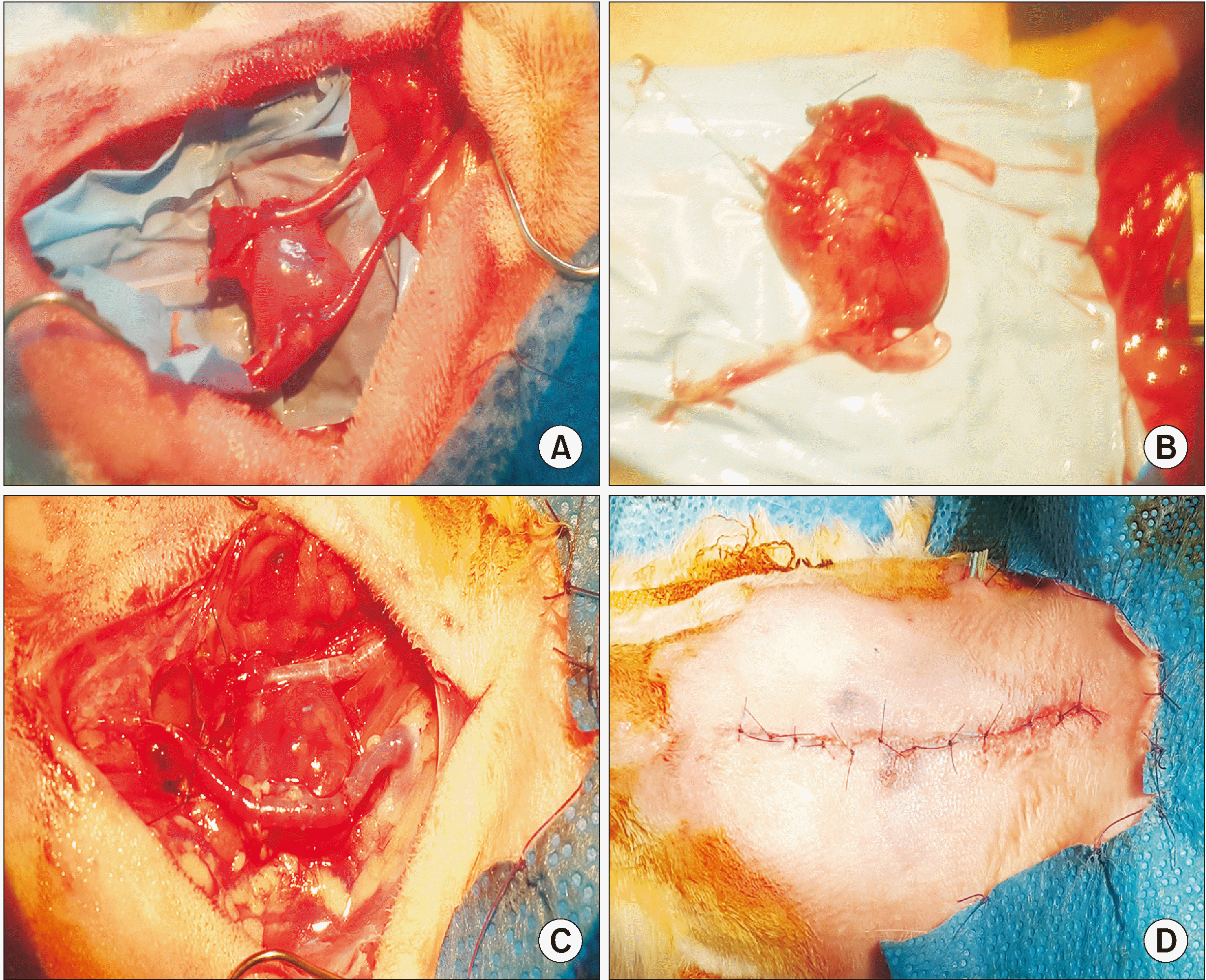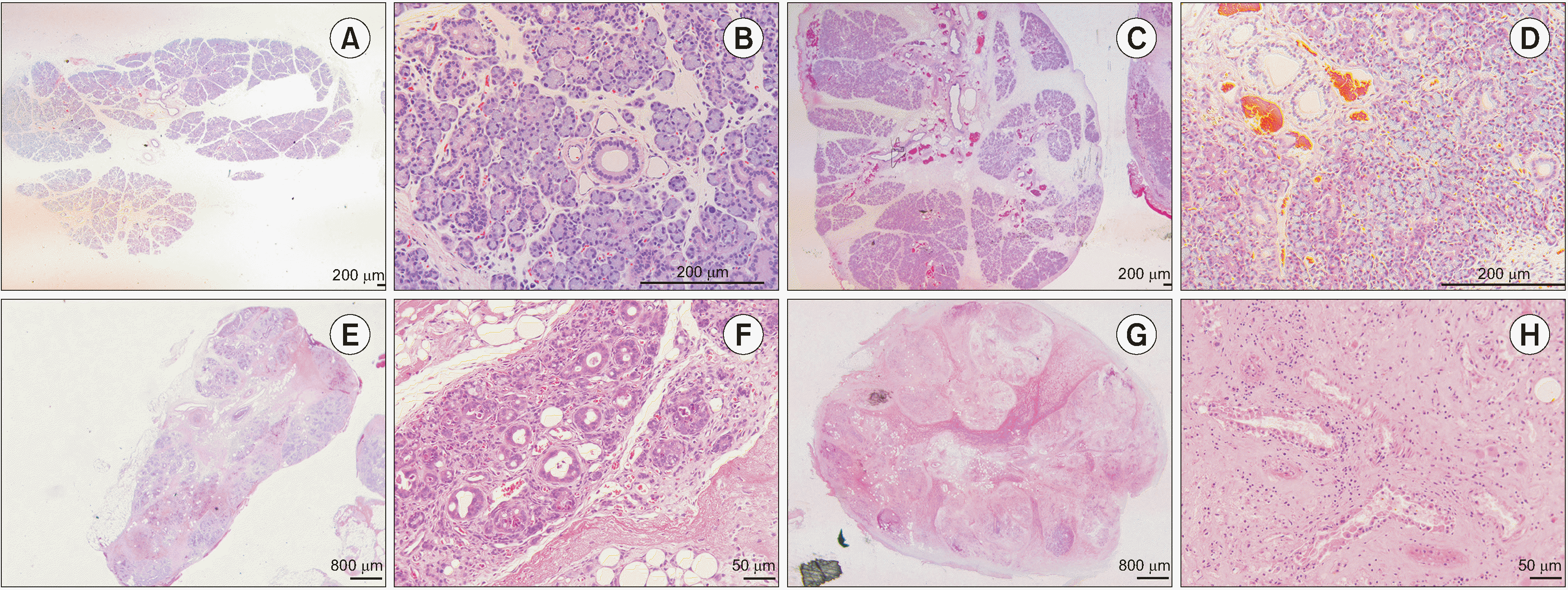1. Jacobsen HC, Hakim SG, Trenkle T, Nitschke M, Steven P, Sieg P. 2013; Allogenic submandibular gland transplantation following hematopoietic stem cell transplantation. J Craniomaxillofac Surg. 41:764–9. DOI:
10.1016/j.jcms.2013.01.015. PMID:
23384573.

2. Wallemacq PE, Reding R. 1993; FK506 (tacrolimus), a novel immunosuppressant in organ transplantation: clinical, biomedical, and analytical aspects. Clin Chem. 39(11 Pt 1):2219–28. DOI:
10.1093/clinchem/39.11.2219. PMID:
7693372.

3. Wang MS, Zeleny-Pooley M, Gold BG. 1997; Comparative dose-dependence study of FK506 and cyclosporin A on the rate of axonal regeneration in the rat sciatic nerve. J Pharmacol Exp Ther. 282:1084–93.
4. Geerling G, Garrett JR, Paterson KL, Sieg P, Collin JR, Carpenter GH, et al. 2008; Innervation and secretory function of transplanted human submandibular salivary glands. Transplantation. 85:135–40. DOI:
10.1097/01.tp.0000296060.39823.a4. PMID:
18192923.

5. Giessler GA, Gades NM, Friedrich PF, Bishop AT. 2007; Severe tacrolimus toxicity in rabbits. Exp Clin Transplant. 5:590–5. PMID:
17617048.
6. Tanaka Isomura E, Yoshitomi K, Hamaguchi M, Yamamoto YE, Kogo M. 2006; Transplantation of vascularized submandibular gland in dogs. J Oral Maxillofac Surg. 64:1561–5. DOI:
10.1016/j.joms.2005.10.040. PMID:
16982317.

7. Almansoori AA, Khentii N, Hei WH, Seo N, Lee SH, Kim SM, et al. 2017; Rabbit submandibular salivary gland replantation. J Korean Assoc Oral Maxillofac Surg. 43:299–304. DOI:
10.5125/jkaoms.2017.43.5.299. PMID:
29142863. PMCID:
PMC5685858.

8. Snell GI, Ivulich S, Mitchell L, Westall GP, Levvey BJ. 2013; Evolution to twice daily bolus intravenous tacrolimus: optimizing efficacy and safety of calcineurin inhibitor delivery early post lung transplant. Ann Transplant. 18:399–407. DOI:
10.12659/AOT.883993. PMID:
23921892.

9. Skeens M, Pai V, Garee A, Termuhlen AM, Bajwa RP, Gross TG, et al. 2012; Twice daily i.v. bolus tacrolimus infusion for GVHD prophylaxis in children undergoing stem cell transplantation. Bone Marrow Transplant. 47:1415–8. DOI:
10.1038/bmt.2012.59. PMID:
22484323.

10. Ge XY, Yu GY, Cai ZG, Mao C. 2006; Long-term survival of an allografted submandibular gland in a miniature swine model given immunosuppressant drugs. Br J Oral Maxillofac Surg. 44:146–51. DOI:
10.1016/j.bjoms.2005.04.004. PMID:
15905005.

12. Kumar PA, Macleod AM, O'Brien BM, Hickey MJ, Knight KR. 1990; Microvascular submandibular gland transfer for the management of xerophthalmia; an experimental study. Br J Plast Surg. 43:431–6. DOI:
10.1016/0007-1226(90)90008-N.
13. Wang J, Wang Y, Lu L, Sun C, Shao D. 2000; Histology of the submandibular glands in rabbits after allotransplantation. J China Med Univ. 29:462–4.
14. Etim NN, Enyenihi GE, Akpabio U, Offiong EEA. 2014; Effects of nutrition on haematology of rabbits: a review. Eur Sci J. 10:413–24.
15. Maheshwari A, Mishra R, Thuluvath PJ. 2004; Post-liver-transplant anemia: etiology and management. Liver Transpl. 10:165–73. DOI:
10.1002/lt.20031. PMID:
14762852.

16. Girlanda R, Kleiner DE, Duan Z, Ford EA, Wright EC, Mannon RB, et al. 2008; Monocyte infiltration and kidney allograft dysfunction during acute rejection. Am J Transplant. 8:600–7. DOI:
10.1111/j.1600-6143.2007.02109.x. PMID:
18294156. PMCID:
PMC2813043.

18. Cordero-Coma M, Anzaar F, Sobrin L, Foster CS. 2007; Systemic immunomodulatory therapy in severe dry eye secondary to inflammation. Ocul Immunol Inflamm. 15:99–104. DOI:
10.1080/09273940701299354. PMID:
17558834.

19. Aoki S, Mizote H, Minamoto A, Suzuki M, Mishima HK, Tanaka H. 2005; Systemic FK506 improved tear secretion in dry eye associated with chronic graft versus host disease. Br J Ophthalmol. 89:243–4. DOI:
10.1136/bjo.2004.051391. PMID:
15665364. PMCID:
PMC1772496.

20. Yeh C, Bowers D, Hadlock TA. 2007; Effect of FK506 on functional recovery after facial nerve injury in the rat. Arch Facial Plast Surg. 9:333–9. DOI:
10.1001/archfaci.9.5.333. PMID:
17875826.

21. Steiner JP, Hamilton GS, Ross DT, Valentine HL, Guo H, Connolly MA, et al. 1997; Neurotrophic immunophilin ligands stimulate structural and functional recovery in neurodegenerative animal models. Proc Natl Acad Sci U S A. 94:2019–24. DOI:
10.1073/pnas.94.5.2019. PMID:
9050897. PMCID:
PMC20035.

22. Burnett AL, Becker RE. 2004; Immunophilin ligands promote penile neurogenesis and erection recovery after cavernous nerve injury. J Urol. 171:495–500. DOI:
10.1097/01.ju.0000089775.88825.ec. PMID:
14665962.







 PDF
PDF Citation
Citation Print
Print



 XML Download
XML Download